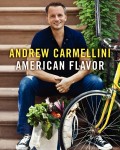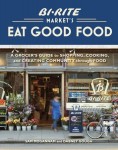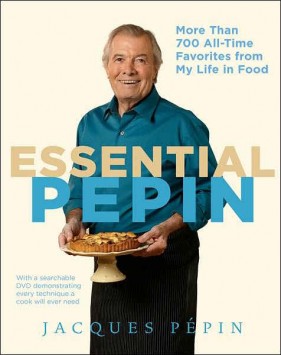Cooking with FlowersSweet and Savory Recipes with Rose Petals, Lilacs, Lavender, and Other Edible Flowers
Photographs by Miana Jun
Miche Bacher shows us that flowers are much more than a decorative element on a dish. A well written and beautifully photographed book that removes any intimidation that one may harbor about using flowers as an ingredient in recipes.
Bring simple, fresh flower recipes to your kitchen table! Edible flowers are abundant and easy to cook with but are often overlooked as being intimidating or too fancy. Cooking with Flowers is filled with special confections and easy everyday treats that everyone will love, from jewel-toned Violet Jam and pretty pink Lavender Lemonade to Pansy Petal Pancakes and Carrot Sunflower Cake.
In this book, you’ll find easy-to-follow recipes and beautiful photographs, as well as the fascinating history and meaning of flowers, plus tips and tricks for finding, cleaning, and preparing edible blossoms. This essential guide covers all the classic uses for farm-fresh, seasonal flowers—whether they’re sourced locally or plucked from your very own garden.
MICHE BACHER is an herbalist, chef, and owner of the custom confectionary studio Mali B Sweets. She lives in the waterfront village of Greenport, New York.
http://www.malibsweets.com/
MIANA JUN is a photographer specializing in food, weddings, and flowers. She is based in Brooklyn.
I’m head over heels for this book, and I’m excited to have it in my proverbial pocket as we head into spring and summer months with all their flowery opportunities.”
–Emma Christensen, TheKitchn.com
“Few cookbooks focus solely on edible flowers, and those that do often devote more pages to gardening and foraging than cooking. This gorgeous niche filler offers plenty of recipes, most notably visually striking desserts and unique “basics”.”
–Library Journal
Watermelon and Feta Hollyhock Salad | Chamomile Apple Streusel Muffins
Elderflower Ice Cream | Lavender Sea Salt Caramels
Watermelon and Feta Hollyhock Salad
Proving that opposites attract, watermelon and feta work well together, with watermelon lending its juice to the dry cheese and feta tempering the sweetness of the melon. Lettucelike hollyhock petals provide texture and a pop of color. Serves 6.
4 cups watermelon chunks
1 cup feta, crumbled
Petals of 4 hollyhock flowers, cut in long, thing strips
¹/₄ cup lime juice
1 tablespoon extra-virgin olive oil
Freshly ground pepper, to taste
This recipe couldn’t be simpler. When you are ready to eat, fill a bowl with watermelon, feta, and hollyhock flowers. Sprinkle lime juice and olive oil over the top and season with pepper to taste. Toss and serve.
Chamomile Apple Streusel Muffins

Soothing and sweet, chamomile has a faintly apple flavor. Chamomile is used in traditional medicine to soothe an upset stomach, so these muffins are particularly good on a post-party morning with a spot of tea and a good book or your morning paper. Makes 12.
Streusel Topping
1/3 cup firmly packed light or dark brown sugar*
3 tablespoons all-purpose flour
2 teaspoons ground cinnamon
2 tablespoons butter, room temperature
Chamomile Muffins
1 3/4 cups all-purpose flour
1/3 cup sugar
1/4 cup packed light or dark brown sugar
2 teaspoons baking powder
1/4 teaspoon salt
1 egg
3/4 cup chamomile tea
1 teaspoon pure vanilla extract
1/4 cup vegetable oil
1 apple (preferably green and large), grated
Though light brown sugar is more common, I personally prefer dark brown sugar for its rich moist qualities. You can use either.
1. Preheat oven to 375°F. Line a 12 cup muffin pan with pretty liners.
2. To prepare the streusel topping, stir to combine flour, sugars, baking powder, and salt in a big bowl.
3. In a separate bowl, mix egg, tea vanilla, and oil with a fork to break up the egg and homogenize the mixture a bit. Stir these liquids into the dry ingredients until just combined (don’t overmix). Stir in grated apples.
4. Fill the muffin cups two-thirds full and generously sprinkle with streusel topping. Bake about 20 minutes or until the streusel is golden brown and a tester inserted in the center of a muffin comes out mostly clean. Let the pan of muffins cool on a wire rack for about 10 minutes if you can wait that long.
Don’t bother breaking out the mixer for this recipe—you won’t need it!
Variation: Make-Ahead Muffins
If you are planning to have these after a night’s indulgence or just aren’t a morning person, I’ll save you a moment in the morning trying to measure. Mix the batter the night before and put it in a covered quart container. Mix up the streusel and put it in a plastic baggie. When morning comes, all you have to do is turn the oven on, fill the muffin cups, and wait.
Elderflower Ice Cream

Wonderfully creamy, with a subtle elderflower flavor, this ice cream is great on its own but works equally well melting over a tart or cobbler or topping a cool bowl of fruit or slice of pound cake. Makes 1 quart.
2 cups heavy cream
2 cups milk
¹/₂ cup sugar
¹/₂ cup elderflower petals
4 egg yolks
Zest and juice of 1 lime
¹/₃ cup elderflower simple syrup
1. Warm cream and milk in a saucepan over medium heat until the liquid comes to a bare simmer. Stir in sugar and elderflower petals and cook without boiling, stirring constantly until the sugar dissolves.
2. In a medium bowl, use a fork to break up egg yolks and mix them with lime juice.
3. When sugar is dissolved, temper yolks. Add a bit of the steamy milk mixture to the yolks while stirring. Continue until about half the milk mixture has been added and then swap and begin pouring the yolk/cream mixture back into the pot, stirring all the while. When all the yolk/cream mixture is in the pot, begin to heat it, stirring until it thickens and reaches about 165°F on a candy thermometer. Add elderflower simple syrup and strain through a fine-mesh strainer into a 1-quart container.
4. Refrigerate ice-cream base for at least 6 hours. (I like to chill it overnight to make sure it’s really cold.) Process ice cream according to the instructions for your ice-cream maker.
Lavender Sea Salt Caramels
I love to play with all the different facets of caramel. One of my favorite things to do is sneak in an unexpected flavor. With lavender and honey, you can capture the essence of the garden even in winter. Fresh lavender is brilliant in summer, but dried works equally well. Paired with local honey, the flavors are sublime. Makes one 8-inch square pan (or about 60 caramels).
¹/₂ cup honey
1¹/₂ cups sugar
2 teaspoons lavender buds
1/4 cup (1 stick) [Miche: which one is correct?] unsalted butter
1 cup heavy cream, lukewarm
¹/₂ teaspoon flaky sea salt, such as Maldon
1. Line one 8-inch square pan with parchment paper and coat the parchment with nonstick spray.
2. Melt honey and sugar in a 4-quart saucepan over medium heat, stirring until the sugar is dissolved. Add lavender buds and keep cooking for another 15 minutes, or until the temperature reaches 220°F on a candy thermometer.
3. Carefully—the hot mixture may bubble up—add butter and cream. Keep stirring until mixture is smooth and no traces of butter remain. Cook, without stirring, for about 10 minutes more, or until temperature reaches 245°F.
4. Pour caramel into the prepared pan, cover, and let it set for about 6 hours.
5. To cut caramels, have strips of parchment paper—or better yet, cello candy wrappers—at the ready. Cut the caramels into desired lengths and shapes (I like 1-inch cubes or 1/2-by-2-inch strips) and wrap. Caramels last for about 1 month, but good luck not eating them or giving them away before then.













Leave a Reply